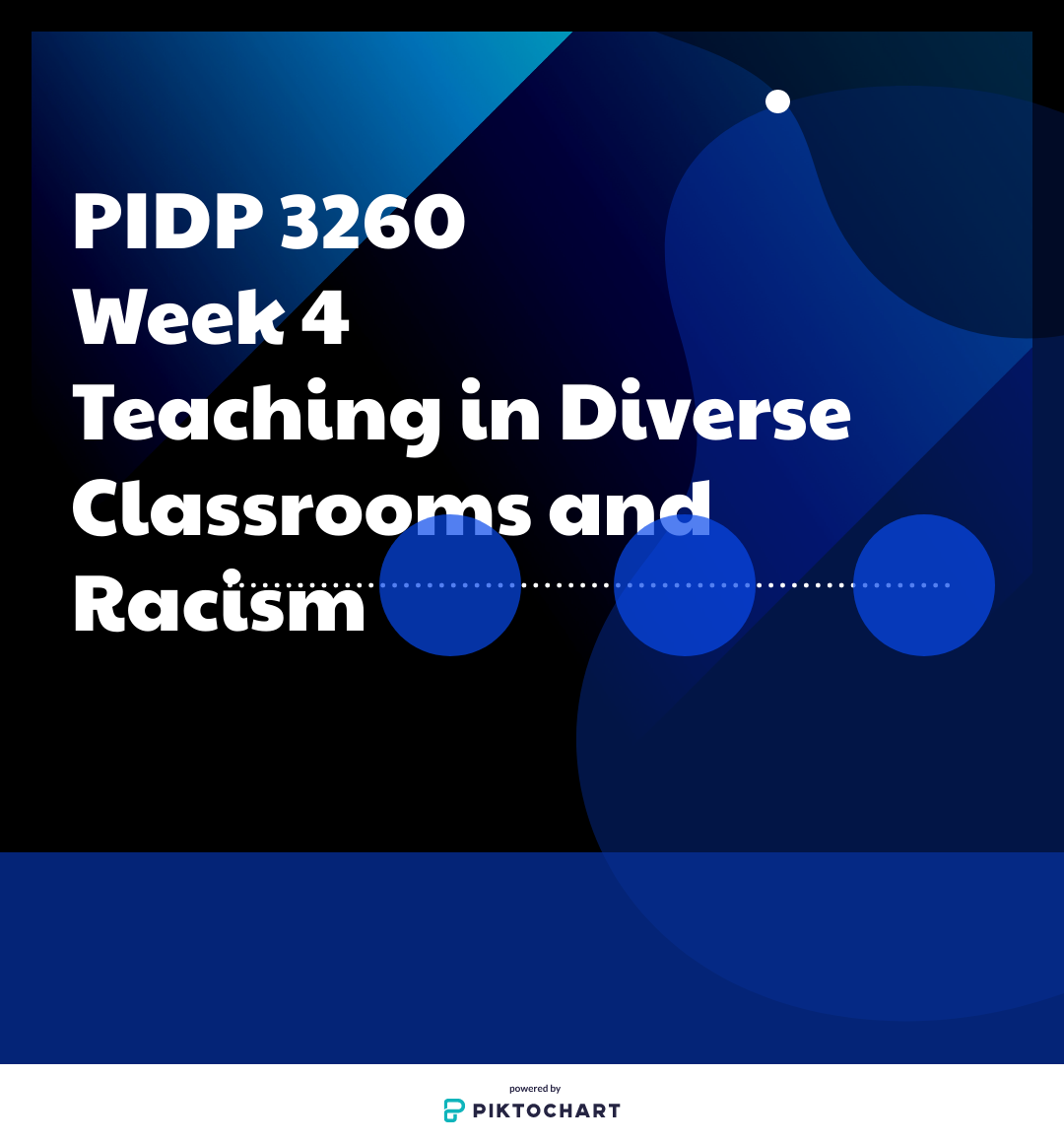PIDP3260 – Week 4 – Teaching in Diverse Classrooms, Teaching about Racism


Commentary on Chapter 8, 9, or 18 (Teaching in Diverse Classrooms, Teaching about Racism, Exercising Teacher Power Responsibly)
Teaching in Diverse Classrooms
In modern times, diverse classrooms are the norm and not the exception in many parts of the world. There are different types of learners and aptitudes co-existing in the same classroom and the challenges and opportunities they present. You may have someone who is barely literate beside someone who is quite talented according to Brookfield (Brookfield 2015, Chapter 9). You will also have self-directed learners and learners who depend entirely on the instructor in the same class and the same can be side for motivation where you have levels all over the spectrum.
Today our multicultural classrooms better reflect people of color, indigenous people, and various ethnic groups that were not as likely to be present at the college level in past decades, according to Brookfield. This presents challenges in itself as there are different nuances that different cultures have and of course many learners will also be speaking English as a second language.
While some instructors are said to become frustrating like this (Brookfield 2015, Chapter 9), I embrace it as someone who has grown up with friends of many different cultural and religious backgrounds, I feel lucky that this has naturally helped me work so well with people of all backgrounds. I believe the key is to embrace the concept of a global community and that we strive to co-exist with those outside what we feel is our traditional bubble, outside of city, province and even country. By doing this in the classroom whether as an instructor or student, I feel there is much to be learned.

Black-white handshake
From my contact with so many people around the world, I’ve learned many useful tips in the workplace and for engaging people of different backgrounds. There is almost always something to be gained by learning about other cultures and backgrounds. Brookfield advocates for having students identify their background and to ask for their assistance in different cultural areas based on people of various groups but I personally feel from my own experience that this can be stigmatizing and put someone on the spot and may be viewed unfavorably by minority groups. I also feel like this may actually lead to more racism and bias against minority groups “Often ethnic and racial stereotypes interfere with equal opportunities” (Murray State 2014). I can also attest that it can become demoralizing when someone makes an assumption on your preference or beliefs based on ethnic or religious group alone, especially when their assumption is incorrect it is stigmatizing at best. In fact by identifying as a minority some research suggests students will automatically be less likely to be placed in higher education or special programs (Journalists Resource (2017)
And finally the key part is how do we deal with diversity that creates different learning styles and expectations? I don’t believe it is much different based on my experience, and feel it would be prejudiced to assume students of certain backgrounds or ethnic groups automatically prefer a certain learning style. The answer is to “mix it up”, by engaging students in a wide variety of learning experiences which include visual, audio, silent and speaking exercises and involve “Active Learning” techniques. By using such a variety of techniques, it is more likely to keep the entire student body active and learning, and the repetition by learning the same material in different ways will help students master the concept.
References:
O. Denise-Marie (2017, Sep 02). Minority students are less likely to be placed in special education .Retrieved from http://journalistsresource.org/studies/society/education/special-education-black-minority-students-research/
Crick S. (2014). Multicultural Factors that Affect Student Achievement. Retrieved from https://sites.google.com/a/murraystate.edu/graduate-journal/CurrentIssue/multicultural-factors-that-affect-student-achievement
Brookfield, S. (2015). The Skillful Teacher: On Technique, Trust, and Responsiveness in the Classroom. San Francisco, CA: Jossey-Bass.





